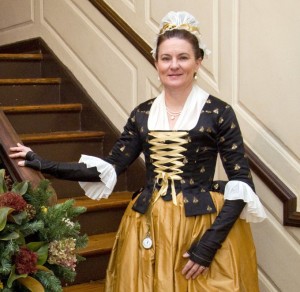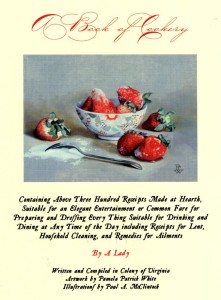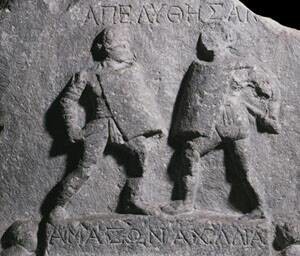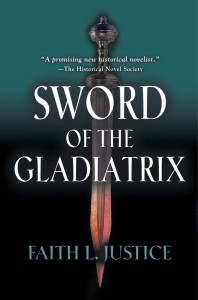 Relevant History welcomes Tracy L. Ward, the historical mystery writer behind the Dr. Peter Ainsley Mystery series, gothic morgue mysteries played out in the dark streets of London. The fourth novel in the series, Sweet Asylym, was just released at the end of June and features the continuing story of Peter Ainsley, a young surgeon, and his high-born sister, Margaret Marshall, as they are pulled unwillingly into a mystery involving a young pregnant woman and her strange, ominous family. A former journalist, Tracy has been writing creatively for a number of years and currently has four novels and three anthologies to her name. To learn more about Tracy’s books, check out her blog, and follow her on Facebook.
Relevant History welcomes Tracy L. Ward, the historical mystery writer behind the Dr. Peter Ainsley Mystery series, gothic morgue mysteries played out in the dark streets of London. The fourth novel in the series, Sweet Asylym, was just released at the end of June and features the continuing story of Peter Ainsley, a young surgeon, and his high-born sister, Margaret Marshall, as they are pulled unwillingly into a mystery involving a young pregnant woman and her strange, ominous family. A former journalist, Tracy has been writing creatively for a number of years and currently has four novels and three anthologies to her name. To learn more about Tracy’s books, check out her blog, and follow her on Facebook.
*****
Chances are sometime during your lifetime you’ve required the services of a doctor. I would also wager that during treatment you were grateful for the doctor’s knowledge regarding your illness or medical needs. That gratitude stems from understanding that these individuals have amassed a great amount of knowledge and the fact that their pursuit of this knowledge has benefited you. The Victorians, on the other hand, did not hold reverence for the medical profession.
During the 19th century, a time of mass improvements within the medical field, the average person both young and old, distrusted the medical establishment with fervor. Gone were the days of the four humors (blood, black bile, yellow bile and phlegm), but that didn’t mean the end of superstition and poor health practices.
Physician vs. surgeon
In Victorian times there were two distinct classes of doctor: the physician and the surgeon. A physician was a medical professional with a somewhat limited understanding of anatomy. Their main purpose was the diagnosis of illness and the prescription of various tonics. Physicians were seen by the average person as a more upper-class position, but that did not mean automatic respect. Physicians spent most of their days with illness and disease, which made their profession far less desirable. Despite society’s need for them they did not enjoy a robust salary nor were they welcome in all corners of society. This changed closer to the end of the century but before then physicians were not praised or revered by any means.
Surgeons were even worse off. Working in surgery meant getting your hands dirty. Unlike physicians, surgeons did the nitty-gritty of medical work, and the Victorian classes viewed this as labour. Before the time of gloves, surgeons often wore the mess of their trade as they traveled from patient to patient. Surgical uniforms stained with the evidence of prior surgeries were worn with honour, a tribute to the wearers experience at the surgical table. Handwashing as well was not widely practiced at this time, which contributed greatly to the spread of infection and in turn high rates of mortality.
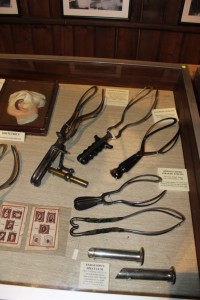 In fact, until handwashing was proven as effective bacteria control, surgeons would move freely from morgue to labouring women without taking care to wash their hands. This practice has been proven to contribute greatly to infant and female mortality rates following childbirth. It was the experiments of Louis Pasteur and Joseph Lister in the 1860s that convinced the medical establishment that germs could be abated and even eradicated if proper instrument washing and heat application techniques were used. These discoveries have saved many lives and changed medical practices irrevocably. (Photo taken by Tracy Ward: This case of obstetric tools used in the mid-18th century at Guy’s and St. Thomas Hospitals in London, England is currently on display at the Old Operating Theatre Museum.)
In fact, until handwashing was proven as effective bacteria control, surgeons would move freely from morgue to labouring women without taking care to wash their hands. This practice has been proven to contribute greatly to infant and female mortality rates following childbirth. It was the experiments of Louis Pasteur and Joseph Lister in the 1860s that convinced the medical establishment that germs could be abated and even eradicated if proper instrument washing and heat application techniques were used. These discoveries have saved many lives and changed medical practices irrevocably. (Photo taken by Tracy Ward: This case of obstetric tools used in the mid-18th century at Guy’s and St. Thomas Hospitals in London, England is currently on display at the Old Operating Theatre Museum.)
Women and their doctors
Despite advances in cell theory and anaesthetic development, there remained a huge gap in medical care available to women. Prior to 1850 all doctors were male and none were permitted to touch their female patients unless absolutely necessary. This applied not only to treatment but also research. Such moral barriers halted advancements in childbirth techniques and menopause treatments. So much of the female body remained a mystery that when locomotive engines were invented and installed throughout England, women were advised not to travel on them because of suspicion their uteruses could not handle the high rate of speed!
The first medical college for women was established in 1850 in Pennsylvania, US. It was 1870 before Edinburgh University in Scotland began allowing women to attend anatomy classes, but even then they wouldn’t permit any of the women to gain medical licenses until 1876. The introduction of women in medicine brought about swift change in how women’s health was studied and treated, which paved the way for advancements in fertility health.
Forensic police work
Prior to the 1800s formal police departments were rare both in North America and across the pond. A spike in crime rates in London in the 1820s highlighted the need for a unified police force to service the boroughs outside the City of London. This need paved the way for the creation of The Metropolitan Police, or more famously Scotland Yard (which was really the name of their building). By the mid-19th century an interesting partnership between surgeons and detectives had emerged. It had become apparent that the bodies of the dead could give many clues to the method of their demise through close observation both outside and in.
Post mortems were nothing new. The ancient Greeks had been studying the bodies of the dead, utilizing the Y shaped incision, long before the invention of forensic science. The practice of autopsies, which means “to see for one self,” fell out of vogue for a number of centuries due to strong Christian views regarding the afterlife. Medical schools were finally permitted to study the dead in the 17th century. Their cadavers were often procured via questionable means before strict laws were introduced in 1834 (England).
Using a highly skilled surgeon with an observer’s eye and a nose for clues, detectives in the 19th century soon realized how invaluable the right doctor could be. Forensic investigations were still limited though. Fingerprinting was at least half a century away, and DNA was more science fiction than proven fact. However the Victorian scientist knew a great deal about chemical reactions and the construct of anatomy. The quintessential text, Grey’s Anatomy, was first published in 1854 and is still used today. The second half of the century saw doctors relying less on superstition as many embraced the scientific method of trial and error and later the power of deduction.
The bulk of advancement within the medical field can be attributed to the Victorian scientists and doctors who often challenged long held, erroneous beliefs and ushered in a new era of scientific advancement. Were it not for the experiments of Pasteur and Lister, we’d view surgery as a definitive death sentence. I also have no doubt that countless murders would remain unsolved. So, this begs the question, have you thanked a Victorian surgeon today?
*****
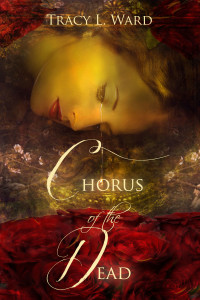 A big thanks to Tracy Ward. She’ll give away an autographed trade paperback copy of the first book of her series, Chorus of the Dead, to someone who contributes a comment on my blog this week. I’ll choose the winner from among those who comment by Friday at 6 p.m. ET. Delivery is available in North America, including Hawaii and Alaska.
A big thanks to Tracy Ward. She’ll give away an autographed trade paperback copy of the first book of her series, Chorus of the Dead, to someone who contributes a comment on my blog this week. I’ll choose the winner from among those who comment by Friday at 6 p.m. ET. Delivery is available in North America, including Hawaii and Alaska.
**********
Did you like what you read? Learn about downloads, discounts, and special offers from Relevant History authors and Suzanne Adair. Subscribe to Suzanne’s free newsletter.

